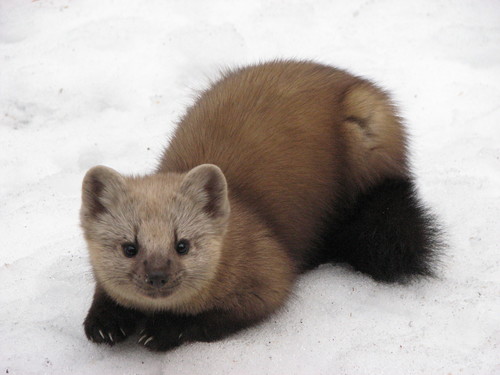
Sable
The sable, Martes zibellina, thrives in Siberian forests, boasting a luxurious fur coat. This elusive carnivore, with its bushy tail and solitary habits, plays a vital role in controlling small mammal populations, highlighting its ecological importance and the allure of its wilderness habitat.
907.2 - 1814.4 g
Weight
Length: 35 - 36 cm
Size
Brown, Black
Color
2 years
Age of Sexual Maturity
7 weeks
Age of Weaning
Least Concern
Conservation Status
Increasing
Population Trend
Characteristics
Martes zibellina, commonly known as the sable, is a small carnivorous mammal native to the forests of northern Asia, particularly Siberia. It has a slender body, soft, dense fur often prized in the fur trade, and a bushy tail. Sables are known for their solitary and elusive nature, often residing in dense forests where they hunt small mammals and birds.
Distribution Range of the Sable
Martes zibellina, commonly known as the sable, is native to the taiga forests of Russia and other parts of Northern Asia. Its geographical distribution includes the Ural Mountains, Siberia, Mongolia, northern China, North Korea, and Hokkaido in Japan.
Sable's Habitat
Environmental Conditions
The sable inhabits dense forests, particularly boreal and mixed forests, preferring regions with abundant snow cover during winter. It thrives in cold, subarctic climates with significant seasonal changes. These areas typically have long, harsh winters and short, cool summers.
Ecological Niche
Sables are well-adapted to life in densely wooded environments, where they are both terrestrial and arboreal. They are carnivorous, feeding on small mammals, birds, fish, and carrion, and play a role in controlling the populations of these species. Their fur provides excellent insulation against the cold, a crucial adaptation for survival in their native habitat.
Copyright @ Nature Style Limited. All Rights Reserved.
 English
English